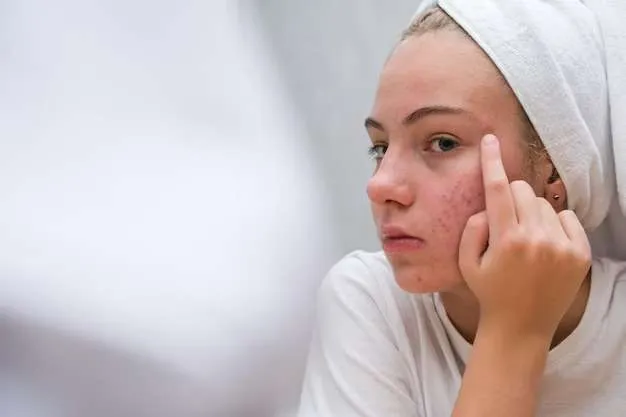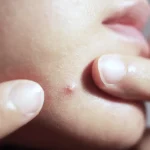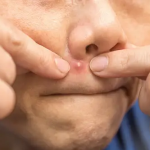It can be rather annoying to deal with a stubborn cystic pimple, but there are things you can do to lessen its appearance and encourage quicker healing. Here are some suggestions to assist reduce swelling and decrease a cystic pimple, though it’s vital to remember that results may not always appear right away:
1. Put it on Ice:
By numbing the area and reducing inflammation, applying ice can relieve discomfort and redness. For five to ten minutes, gently massage an ice pack or a clean cloth packed with ice cubes against the pimple by wrapping it in a thin towel. Make sure to take brief rests to prevent damaging your skin.
2. Apply a Spot Treatment:
Pick a concentrated spot treatment that contains sulfur, benzoyl peroxide, or salicylic acid. These components have the ability to clear blocked pores, lessen inflammation, and encourage quicker healing. Before going to bed, apply the remedy straight onto the cystic zit.
3. Tea Tree Oil
Having inherent antibacterial and anti-inflammatory qualities, tea tree oil may be beneficial for cystic acne. Using a cotton swab, apply a tiny amount of diluted tea tree oil (such as jojoba or coconut oil) to the affected area. Rinse it off in the morning after leaving it on all night.
4. Hydrocolloid Bandages for Overnight Healing
Hydrocolloid bandages, which are frequently used to treat wounds, can work well for cystic acne. These bandages absorb excess fluid and form a barrier against microorganisms. fluid, encouraging a quicker recovery. After cleaning the region, immediately cover the zit with the bandage, and leave it there all night.
5. Aspirin Paste
Salicylic acid, a major component of acne treatments, is found in aspirin. To make a paste, crush an aspirin tablet and combine it with a few drops of water. After applying the paste to the cystic zit and letting it sit for 15 to 20 minutes, rinse it off. Aspirin’s anti-inflammatory qualities might aid in lowering edema.
6. Keep Yourself Hydrated and Eat a Balanced Diet
Water helps your body eliminate toxins, which improves the health of your skin in general. A diet high in fruits, vegetables, and whole grains also provide vital elements that help regenerate skin. Cutting back on processed and dairy products may helpaid in lowering inflammation.
7. Refrain from Popping or Squeezing
Although it could seem alluring, refrain from popping or squeezing a cystic pimple as this may exacerbate inflammation, cause scarring, and introduce bacteria. Be patient as the healing process unfolds and allow the therapies to do their work overnight.
Keep in mind that each individual has a different type of skin, so what suits one person may not suit another. For individualized guidance and treatment choices, it is recommended that you see a dermatologist if your cystic acne continues or gets worse. Maintaining a healthy lifestyle and adhering to a regular skincare regimen can help to improve the management of cystic acne over the long run.










